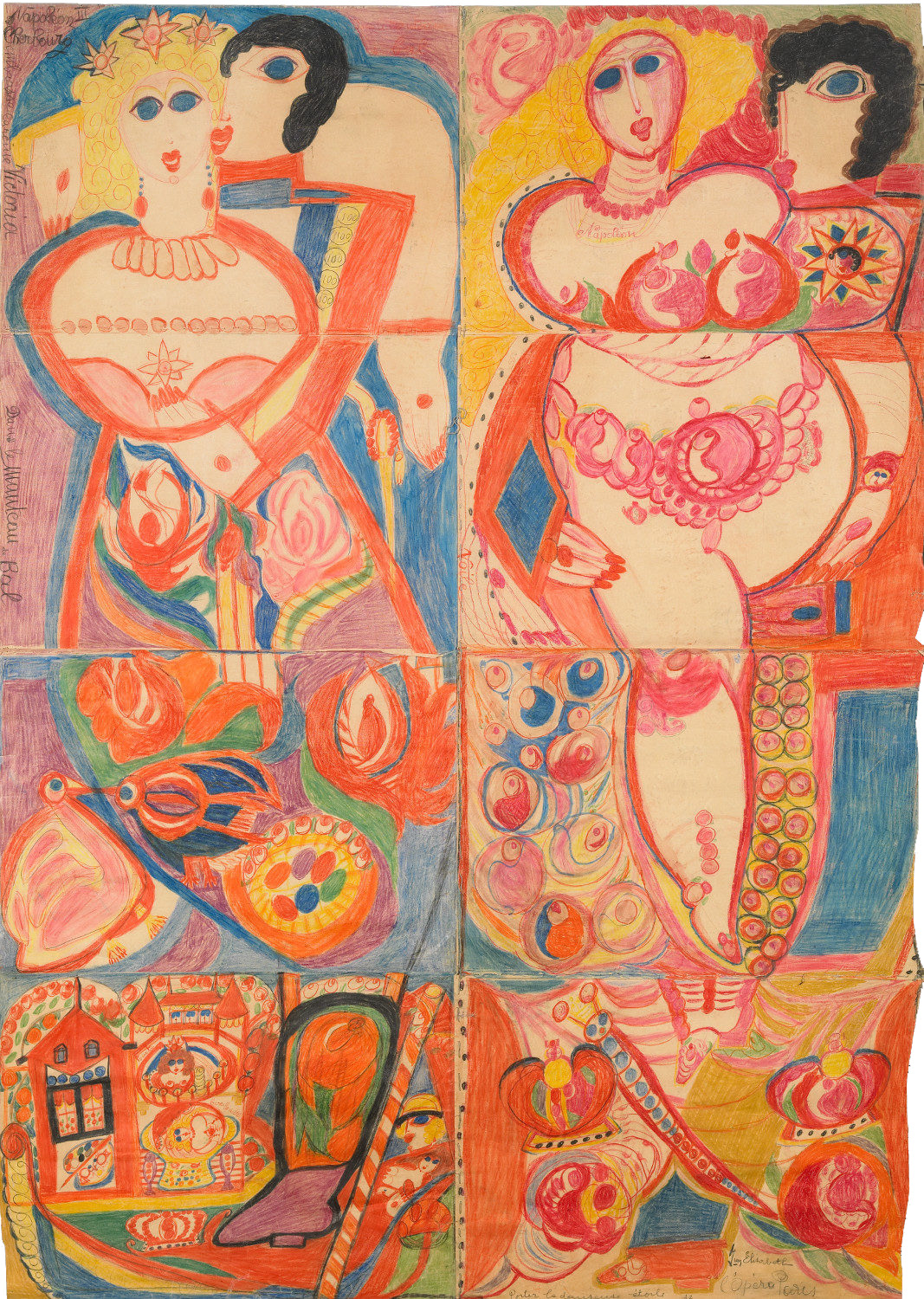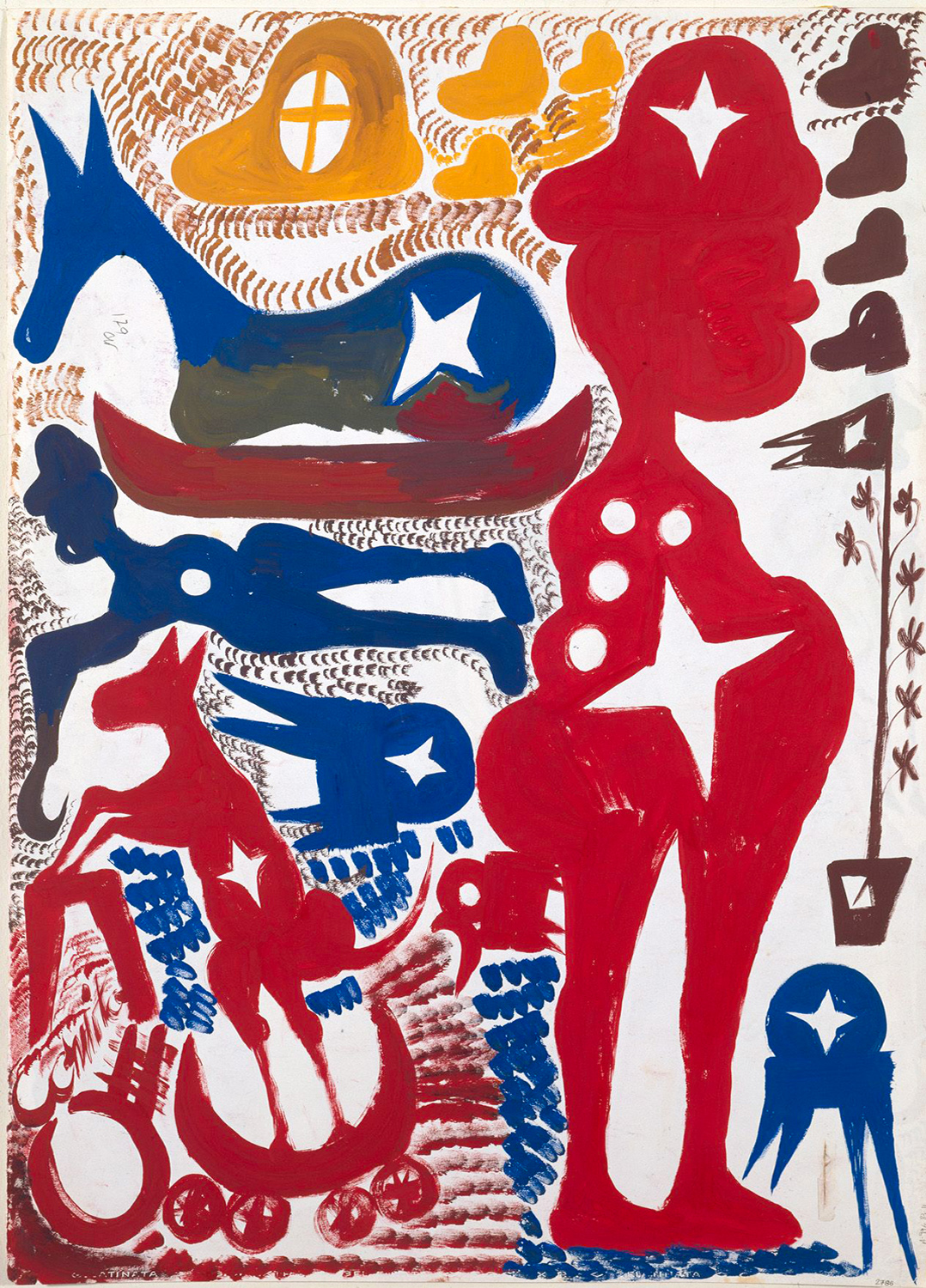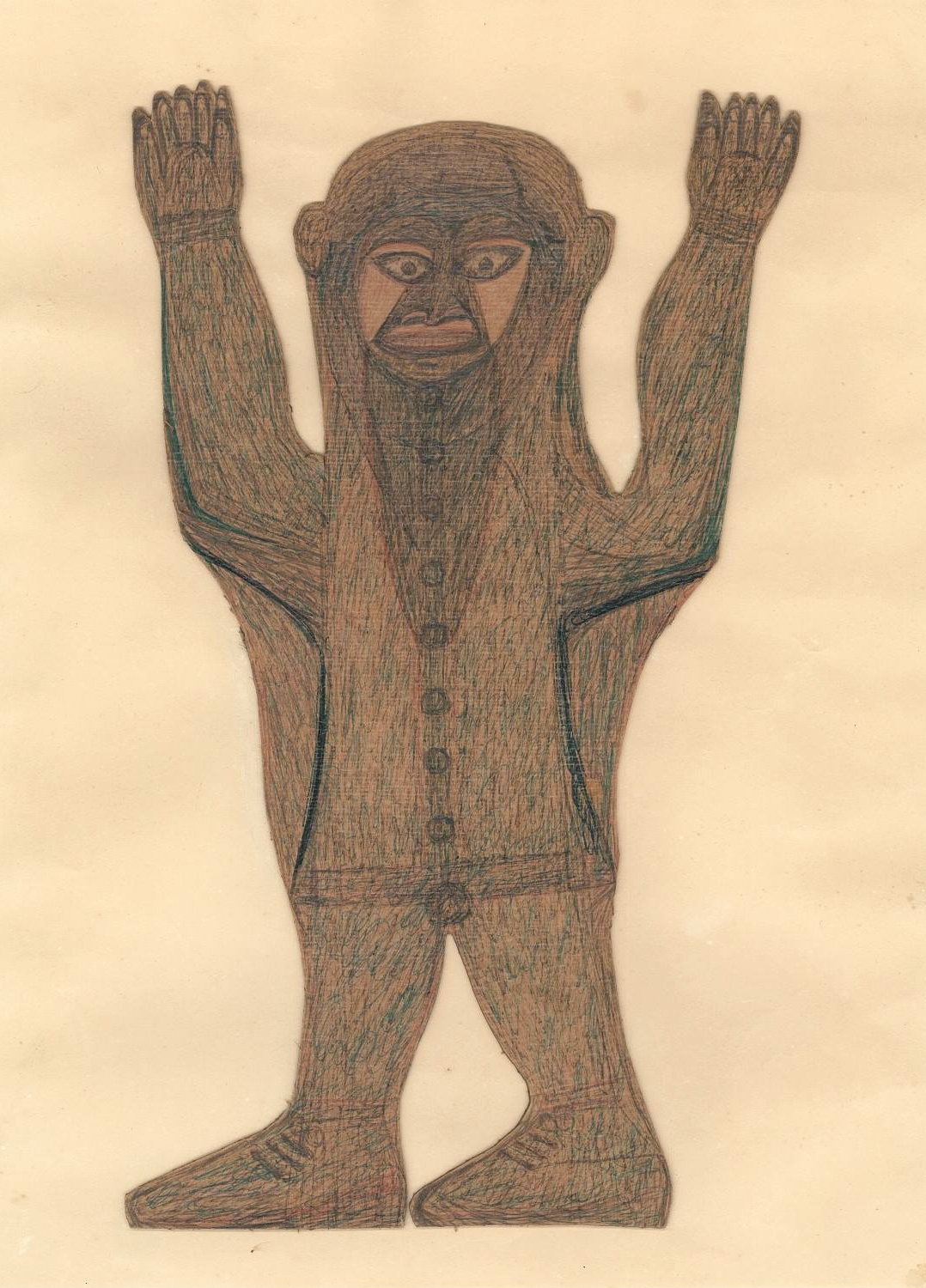PT | EN
ART BRUT
The term Art Brut, coined by the french artist Jean Dubuffet in 1945, describes the art created by unadapted, deranged, visionary, medium, alienated people. It is sometimes misapplied for other marginal expressions, such as outsider art, singular art or folk art, since in many cases it is actually difficult to trace the boundaries between each genre.
It is defined by the rejection of the established art scene, primarily on the commercial and social promotion premises of the creative act. The works created by these artists, without any academic constraints, formal training or specific formatting, emerge spontaneously as an impulse, an inner scream that urges to be heard, springing from their guts, often as a means of therapy for their mental disorders.
Once obscured, it is now considered by many as the most genuine and vital art. There is no collection of any museum of modern art that can be considered fully complete without at least a couple of works of this kind. So it is in the MoMa in New York, the Tate Modern in London and the Centre Pompidou in Paris.
Adolf Wölfli, Gaston Dufour and Aloïse Corbaz, three of the artists discovered by Jean Dubuffet.
ART BEYOND BOUNDARIES: THE RAW APPEAL OF OUTSIDER ART
By Naomi Martin, in Artland
«In the early 20th century, two doctors produced highly influential writings on art created by patients in psychiatric hospitals, originally intended for medical research. Swiss psychiatrist Walter Morgenthaler was enthralled by the artworks of one of his long-term patients, Adolf Wölfli, which he analysed in his book A Mental Patient as Artist (1921); while German psychiatrist Hans Prinzhorn documented and collected thousands of artworks by his patients in Artistry of the Mentally Ill (1922). The latter became a tremendous influence on the Surrealist movement and other artists of the time, in particular Jean Dubuffet.
Dubuffet was one of the most influential French artists of the post-World War II era. After studying Prinzhorn’s essays, he became utterly fascinated with the art of the mentally ill, which held, in his eyes, incomparable qualities and represented the purest form of artistic creation. Entirely immersed in the concept, Dubuffet found an inexhaustible source of inspiration for his own art, and founded the Compagnie de l’Art Brut in 1948, with one of Surrealism’s most acclaimed figure, André Breton. With this organisation, Dubuffet sought to collect the works of these untrained artists, celebrating the raw quality untouched by academic rules and current trends with exhibitions and publications. He maintained that, because of its spontaneity and innocence, Art Brut was far superior to any other established genre marked by art-history.
Although it might have been considered as such, Art Brut was not solely the art of the psychologically troubled. Many works were indeed produced by asylum inmates, but Dubuffet explained in his manifesto that mental illness was not a criterion. Art Brut was instead meant to encompass the artistic creativity of minds sheltered from external influences, able to produce spontaneous and immediate artistic responses to their surroundings.»
Henry Darger’s “Vivian Girls”.
«Roger Cardinal’s 1972 study of Art Brut which led him to coin the term Outsider Art was a significant milestone in the history of the genre, as it helped garner international attention and a new global following. A few years later, in 1979, Cardinal organised the exhibition Outsiders: An Art Without Precedence or Tradition at London’s Hayward Gallery, developing Dubuffet’s initial vision even further, by including the works of American artists such as Martin Ramirez and Henry Darger.
With this exhibition, Cardinal opened the door to more artists and thus challenged the stricter limits previously imposed by Dubuffet; Art Brut and Outsider Art merged into an international sensation, unifying a greater variety of artworks, but still retaining the same pioneering core and values. By the 1980s, the term Outsider Art stretched to include all kinds of works produced by marginalized artists, including those who had been previously labelled as Folk Artists.»
Art Brut in japanese ceramics.
«Throughout the 1990s, the rise and recognition of Outsider Art became unquestioned. Mainstream museums and galleries started to pay attention to the genre, acknowledging its worth and accepting it as “serious” art. Most recently, a number of events solely dedicated to the works of Outsider Artists started to emerge, such as the eponymous Outsider Art Fairs of New York and Paris, and the representation of the genre in established exhibitions, most notably with the 55th Venice Biennale or the retrospective on Henry Darger at the Museum of Modern Art of Paris.
Today, despite its misleading label, Outsider Art is booming. Pieces that would have gone for a few hundred dollars in the 1970s are now reaching six figures – Christie’s 2019 sale of Outsider and Vernacular Art even brought in over $4m, consolidating the idea that Outsider Art has now been accepted and recognised by the art market, from collectors to mainstream museums.
Raw, “uncooked” by the art world, Outsider Art continues to amaze and surprise today, as its boundaries are becoming more and more fluid. Minorities, migrants, disabled, mentally ill, self-taught – all these “outsiders” are essentially united by a powerful personal desire to create primarily for themselves, depicting without formal training entire worlds of their own, in the purest and rawest form. Outsider Art is here to stay, now considered a fundamental branch of the art historical canon and every bit an established insider of the art world.»
Works by Carlo Zinelli, Jaime Fernandes and Bill Traylor.
![]() INFO/LINKS
INFO/LINKS












